Discover TOEFL Listening
TOEFL Listening

TOEFL Listening
Author: Se Mehraban
Subscribed: 506Played: 14,123Subscribe
Share
Description
Welcome to the TOEFL Listening channel
This channel is created to provide you with essential listening podcasts from actual TOEFL tests (top)
In order to acquire the best result from this podcast, do as follow:
1- Listen to podcasts from No 1 to 10 in your free time or when walking or using the subway.
2- Listen to podcasts No 11 to 20 carefully and use the imitation technic in order to increase your listening and understanding skills.
Using imitation technic helps speak as well.
3- Listen to podcasts No 21 to 40 in a test mode and answer the questions. While proceeding, try to increase the correct answers and reduce mistakes.
4- Listen to podcasts No 41 to 73 in a test mode alongside other skills (Reading, Speaking, Writing) like a real test.
If you have questions or concerns, do not hesitate to contact me via Instagram DM.
Good Luck
This channel is created to provide you with essential listening podcasts from actual TOEFL tests (top)
In order to acquire the best result from this podcast, do as follow:
1- Listen to podcasts from No 1 to 10 in your free time or when walking or using the subway.
2- Listen to podcasts No 11 to 20 carefully and use the imitation technic in order to increase your listening and understanding skills.
Using imitation technic helps speak as well.
3- Listen to podcasts No 21 to 40 in a test mode and answer the questions. While proceeding, try to increase the correct answers and reduce mistakes.
4- Listen to podcasts No 41 to 73 in a test mode alongside other skills (Reading, Speaking, Writing) like a real test.
If you have questions or concerns, do not hesitate to contact me via Instagram DM.
Good Luck
90 Episodes
Reverse
TPO 15 - Lecture 4Narrator: Listen to part of a lecture in a Biology class.Female Professor: OK, we've being talking till now about the two basic needs of biological community: an energy source to produce organic materials, you know, uh, food for the organisms and the waste recycling or breakdown of materials back into inorganic molecules, and about how all this requires photosynthesis, when green plants or microbes converts sunlight into energy, and also requires microorganisms, bacteria, to secrete chemicals that break down or recycle the organic material to complete the cycle. So, now we're done with this chapter of the textbook, we can just review for the weekly quiz and move on to the next chapter, right? Well, not so fast. First, I'd like to talk about some discoveries that have challenged one of these fundamental assumptions about what you need in order to have a biological community. And, well, there actually were quite a few surprises! It all began in 1977 with the exploration of hydrothermal vents on the ocean floor. Hydrothermal vents are cracks on the Earth surface that occur, well, the ones we're talking about here, are found deep at the bottom of the ocean. And these vents on the ocean floor, they release this incredibly hot water, three to four times the temperature that you boil water at, because this water's being heated deep within the Earth. Well, about 30 years ago, researchers sent a deep-sea vessel to explore the ocean's depth, about three kilometers down, way deep to the ocean floor. [,] No one had ever explored that far down before. Nobody expected there to be any life down there because of the conditions. First of all, sunlight doesn't reach that far down so it's totally dark. There couldn't be any plant or animal life, since there's no sunlight, no source of energy to make food. If there was any life at all, it'd just be some bacteria breaking down any dead materials that might have fallen to the bottom of the ocean. Ann?Female student: And what about the water pressure? Didn't we talk before about how the deeper down into the ocean you go, the greater the pressure?Professor: Excellent point! And not only the extreme pressure, but also the extreme temperature of the water around these vents. If the lack of sunlight didn't rule out the existence of a biological community down there, then these factors certainly would, or so they thought.Male student: So you're telling us they did find organism that could live under those conditions?Professor: They did indeed, something like three hundred different species.Female student: But, but, how could that be? I mean, without sunlight, no energy, no, no...Professor: What they discovered was that microorganisms, bacteria, had taken over both functions of the biological community: the recycling of waste materials and the production of energy. They were the energy source. You see, it turns out that certain microorganisms are chemosynthetic – they don't need sunlight because they take their energy from chemical reactions. So, as I said, unlike green plants which are photosynthetic and get their energy from sunlight, these bacteria that they found at the ocean floor, these are chemosynthetic, which means that they get their energy from chemical reactions. How does this work? As we said, these hydrothermal vents are releasing into the ocean depth, this intensely hot water, and here's the thing, this hot water contains chemical called hydrogen sulfide and also a gas, carbon dioxide. Now these bacteria actually combine the hydrogen sulfide with the carbon dioxide. And this chemical reaction is what produces organic material, which is the food for larger organisms. The researchers have never seen anything like it before.Male student: Wow! So just add a chemical to a gas and bingo! You've got a food supply?Professor: Not just that, what was even more surprising were all the large organisms that lived down there. The most distinctive of these was something called the tube worm. Here, let me show you a picture. The tube of the tube worm was really, really long. They can be up to one and a half meters long, and these tubes are attached to the ocean floor, pretty weird looking, huh? And another thing, the tube worm has no mouth or digestive organs. So you're asking, how does it eat? Well, they have this special organs that collect the hydrogen sulfide and carbon dioxide, and then transfer it to another organ where billions of bacteria live, these bacteria that live inside the tube worms. The tube worms provide them with hydrogen sulfide and carbon dioxide and the bacteria, well, the bacteria kind of feed the tube worms through chemosynthesis. Remember? That chemical reaction I described earlier.
TPO 15 - Lecture 3Narrator: Listen to part of a lecture in an Art History class.Male professor: Now in Europe in the Middle Ages before the invention of printing and printing press, all books, all manuscripts were hand made, and the material typically used for the pages was parchment, which is animal skin that’s stretched and dried under tension so it becomes really flat and can be written on. During the 1400s when printing was being developed, paper became the predominant material for books in Europe. But prior to that, it was parchment. Parchment is durable, much more so than paper, and it could be reused which came in handy since it was a costly material and in short supply. So it wasn’t uncommon for the scribes or monks who produced the manuscripts. Uh, remember before printing, books were made mainly in monasteries. Well, the scribes often recycled the parchment that had been used for earlier manuscripts. They simply erased the ink off the parchment and wrote something new in its place. A manuscript page that was written on, erased and used again, is called a palimpsest. Palimpsests were created …well, we know about two methods that were used for removing ink from parchment. In the late Middle Ages, it was customary to scrape away the surface of the parchment with an abrasive, which completely wiped out any writing that was there. But earlier, in the Middle Ages, the original ink was usually removed by washing the used parchment with milk. That removed the ink. But with the passing of time, the original writing might reappear; in fact, it might reappear to the extent that scholars could make out and even decipher the original text. Perhaps the most famous example is the Archimedes palimpsest. Archimedes lived in Greece around 200 BCE. And as you probably know, he’s considered one of the greatest mathematicians who ever lived.Even though many of his writings have been lost, including what many now think to be his most important work, called The Method. But in 1998, a book of prayers from the Middle Ages sold in an art auction for a lot of money, more money than anyone would pay for a damaged book from the 12th century, beautiful or not. Why? It had been discovered that the book was a palimpsest, and beneath the surface writing of the manuscript laid, guess what? Mathematical theorems and diagrams from Archimedes. Archimedes’ writings were originally done on the papyrus scrolls. Then in the tenth century, a scribe made a copy on parchment of some of his texts and diagrams including, as it turns out, The Method. This was extremely fortunate, since later on, the original papyrus scrolls disappeared. About two hundred years later in the 12th century, this parchment manuscript became a palimpsest when a scribe used the parchment to make a prayer book, so the pages, the pieces of parchment themselves, had been preserved, but the Archimedes text was erased and written over and no one knew it existed. It wasn’t until 1906 that a scholar came across the prayer book in the library and realized it was a palimpsest, and that the underlying layer of text could only have come from Archimedes. That was when his work The Method was discovered for the first time. Um, the palimpsest then went through some more tough times but eventually it ended up in an art auction where it was bought and then donated to an art museum in Baltimore for conservation and study. To avoid further damage to the manuscript, research team at the art museum has had to be extremely selective in the techniques they used to see the original writing. They’ve used ultraviolet light and some other techniques, and if you’re interested in that sort of thing, you can learn more about it in an art conservation class. But, actually, it was a physicist who came up with the method that was a breakthrough. He realized that the iron in the ancient ink would display if exposed to a certain X-ray imaging method. And except for small portions of the text that couldn’t be deciphered, this technique’s been very helpful in seeing Archimedes texts and drawings through medieval over-writing.
TPO 15 - Conversation 2Narrator: Listen to part of a conversation between a student and her biology professor.Professor: Hi, Samantha, how did your track meet go?Student: Great! I placed first in one race and third in another.Professor: Congratulations, you must practice a lot.Student: Three times a week pre-season, but now that we are competing every weekend.We practice six days a week from 3:30 to 5.Professor: Athletics places a heavy demand on your time, don’t they?Student: Yeah, but I really love competing, so…Professor: You know, I played soccer in college and my biggest challenge, and I didn’t always succeed, was getting my studying in during soccer season. Are you having a similar?Student: No. I really do make time to study, and I actually study more for this class than I do for all my other classes. But I didn’t see the grade I expected on my mid-term exam which is why I came by.Professor: Well, you didn’t do badly on the exam but I agree it did not reflect your potential. I say this because your work on the lab project was exemplary. I was so impressed with the way you handled the microscope and the samples of onion cells and, well, how careful you observed and diagramed and interpreted each stage of cell division, and I don’t think you could have done that if you hadn’t understood the chapter. I mean, it seemed you really had a good understanding of it.Student: I thought so, too. But I missed some questions about cell division on the exam.Professor: So, what happened?Student: I just sort of blanked out, I guess. I had a hard time remembering details. It was so frustrating.Professor: All right. Let’s back up. You say you studied. Where? At home?Student: At my kitchen table, actually.Professor: And that’s supposed to be a quiet environment?Student: Not exactly. My brother and parents try to keep it down when I’m studying but the phone pretty much rings off the hook, so.Professor: So you might try a place with fewer distractions, like, the library.Student: But the library closes at midnight and I like to study all night before a test. You know, so everything is fresh in my mind. I studied six straight hours the night before the mid-term exam. That’s why I expected to do so much better.Professor: Oh, OK. You know that studying six consecutive hours is not equivalent to studying one hour a day for six days.Student: It isn’t?Professor: No, there’s a research that shows that after an hour of intensive focus, your brain needs a break. It needs to, you know, shift gears a little. Your brain’s ability to absorb information starts to decline after about the first hour. So if you are dealing with a lot of new concepts and vocabulary, anyway, if you just review your notes even twenty minutes a day, it’d be much better than waiting until the night before the exam to try and absorb all those details.Student: Oh, I didn’t realize.Professor: Think of your brain as a muscle. If you didn’t practice regularly with your track team, and then try to squeeze in three weeks’ worth of running practice the day before a track meet, how well do you think you will perform in the races?
TPO 15 - Lecture 2Narrator: Listen to part of a lecture in a geology class.Male professor: Geologists, we examine layers of sediment on the Earth’s surface to approximate the dates of past geologic time periods. Uh, sediment, as you know, is material like sand, gravel, fossil fragments that is transported by natural processes like wind, water flow or the movement of glaciers. So, uh, sediment is transported and then deposited and to form layers on the Earth’s surface over time. We examine these layers to learn about different geologic time periods including when they began and ended. For example, from about 1.8 million years ago to around 11,000 years ago was the Pleistocene epoch. The Pleistocene epoch was an ice age. During this epoch, sediment was made by the kind of erosion and weathering that happens when the climate was colder. And part of those sediments are fossils of plants and animals that lived at that time. The Holocene epoch followed the Pleistocene epoch when the Earth’s climate warmed up around 11,000 years ago. The Holocene epoch is characterized by different sediments, ones that formed when the climate is warmer. Because the climate changed, the types of plants and animals changed also. Holocene sediments contain remnants of more recent plants and animals. So it’s pretty easy to differentiate, geologically, between these two epochs. Now there is growing evidence that the presence of humans has altered the Earth so much that a new epoch of geologic history has begun – the Anthropocene epoch, a new human-influenced epoch. This idea, that we’ve entered a new Anthropocene epoch, was first proposed in 2002. The idea is that around the year 1800 CE, the human population became large enough, around a billion people, that its activities started altering the environment. This was also the time the Industrial Revolution, which brought a tremendous increase in the use of fossil fuels such as coal. The exploitation of fossil fuels has brought planet-wide developments – industrialization, construction, um, mass transport – and these developments have caused major changes like additional erosion of the Earth’s surface and deforestation. Also, things like the damming of rivers has caused increased sediment production, not to mention the addition of more carbon dioxide and methane in the atmosphere. Naturally, all these changes show up in recent sediments and these sediments are quite different from pre-year 1800 sediment layers. Interestingly, there are some speculation that human started having a major impact on Earth much earlier about 8,000 years ago – that’s when agriculture was becoming widespread. Early farmers started clearing forests and livestock produced a lot of extra methane. But I want to stress this is just a hypothesis. The idea that early humans could have had such a major effect…well, I’m just not sure we can compare it with the industrial age. Geologists in the far future will be able to examine the sediment being laid down today, whereas right now we can say that, yes, human impact on the Earth is clear. It’ll be future researchers who have a better perspective and will be able to really draw a line between the Holocene and the Anthropocene epochs.
TPO 15 - Lecture 1Narrator: Listen to part of a lecture in a psychology class.Female Professor: For decades, psychologists have been looking at our ability to perform tasks while other things are going on. How we're able to keep from being distracted and what the conditions for good concentration are. As long ago as 1982, researchers came up with something called the CFQ, the Cognitive Failures Questionnaire. This questionnaire asks people to rate themselves according to how often they get distracted in different situations, like, um, forgetting to save a computer file because they had something else on their mind, or, missing a speed limit sign on the road, John?Male student: I've lost my share of computer files but not because I'm easily distracted. I just forget to save them.Professor: And that's part of the problem with the CFQ. It doesn't take other factors into account enough like forgetfulness. Plus you really can't say you are getting objective scientific results from a subjective questionnaire where people report on themselves. So it's no surprise that someone attempted to design an objective way to measure distraction. It's a simple computer game designed by a psychologist named Nilli Lavie. In Lavie's game, people watch as the letters “N” and “X” appear and disappear in a certain area on the computer screen. Every time they see an N, they press one key and every time they see an X, they press another. Except other letters also start appearing in the surrounding area of the screen with increasing frequency which creates a distraction and makes the task more difficult. Lavie observed that people's reaction time slowed as these distractions increased.Female student: Well, that's not too surprising, is it?Professor: No, it's not. It's the next part of the experiment that was surprising. When the difficulty really increased, when the screen filled up with letters, people got better at spotting the X's and N's. Why do you think that happened?Male student: Well, maybe when we're really concentrating, we just don't perceive irrelevant information, maybe we just don't take it in, you know?Professor: Yes, and that's one of the hypotheses that was proposed, that the brain simply doesn't admit unimportant information. The second hypothesis is that, yes, we do perceive everything, but the brain categorizes the information. And whatever's not relevant to what we're concentrating on gets treated as low priority. So Lavie did another experiment designed to look at this ability to concentrate better in the face of increased difficulty. This time, she used brain scanning equipment to monitor activity in a certain part of the brain. The area called V5, which is part of the visual cortex, the part of our brains that processes visual stimuli. V5 is the area of the visual cortex that's responsible for the sensation of movement. Once again, Lavie gave people a computer-based task to do. They had to distinguish between words in upper- and lower-cased letters; or even harder, they had to count the number of syllables in different words. This time, the distraction was a moving star field in the background. You know, where it looks like you're moving through space passing stars? Normally, area V5 would be stimulated as those moving stars are perceived, and sure enough, Lavie found that during the task, area V5 was active, so people were aware of the moving star field. That means people were not blocking out the distraction.Female student: So doesn't that mean the first hypothesis you mentioned was wrong? The one that says we don't even perceive irrelevant information when we're concentrating?Professor: Yes, that's right, up to a point, but that's not all. Lavie also discovered that as she made the task more difficult, V5 became less active. So that means that now people weren't really noticing the star field at all. That was quite a surprise! And it proved that the second hypothesis, that we do perceive everything all the time but the brain categorizes distractions differently, well, that wasn't true either. Lavie thinks the solution lies in the brain's ability to accept or ignore visual information. She thinks its capacity is limited.It's like a highway: when there are too many cars, traffic is stopped. No one can get on. So when the brain is loaded to capacity, no new distractions can be perceived. Now, that maybe the correct conclusion for visual distractions, but more research is needed to tell us how the brain deals with, say, the distractions of solving a math problem when we're hungry, or when someone is singing in the next room.
TPO 15 - Conversation 1Narrator: Listen to a conversation between a student and the faculty adviser of the campus newspaper.Man: Hi, I talked to someone on the phone a couple of weeks ago. Anna, I think it was?Woman: I am Anna, the faculty adviser.Man: Oh, great! I'm Peter Murphy. You probably don't remember me, butWoman: ... No, no, I remember you. You were interested in working for the paper.Man: Yeah, as a reporter.Woman: That's right. Uh, you're taking a journalism class and you've done some reporting before in high school, right?Man: Wow, you have a good memory.Woman: Well, we haven't had many students applying lately. So, anyway, you still want to do some reporting for us?Man: Yeah, if you have room for me on the staff.Woman: Well, we always need more reporters, but you know we don't pay anything, right?Man: Yeah, I know. But I, uh, I'd like the experience. It will look good on my resume.Woman: Absolutely! Let's see. I think I told you that we ask prospective reporters to turn in some outlines for possible articles?Ma: Yeah, I sent them in about a week ago. But I haven't heard anything back yet, so, so I thought I'd stop by and see, but I guess you haven't looked at them yet.Woman: Oh, Max, the news editor, he looks at all the submissions.Man: Oh, so he hasn't made any decision about me yet?Woman: Well, I just got here a few minutes ago, haven't been in for a couple of days. Uh, just give me a second to check my email. Uh, here's a message from Max. Let' see. Well, it seems you've really impressed him. He says it'd be wonderful if you could join our staff.Man: Oh, great! When can I start?Woman: Well, you turned in an outline on something to do with the Physics Department?Man: Yeah. They're trying to come up with ways to get more students to take their introductory courses.Woman: Right. Well, apparently nobody else is covering that story so he wants you to follow up on it.Man: OK. Uh, what about the other outline I sent in? About the proposed increase in tuition fee?Woman: Oh, it looks like we've got that covered.Man: So, I'm starting with an article about the Physics Department. I guess I'd better get to work. Do you have any advice on how I should cover the story?Woman: Well, Max wanted to talk to you, but, I'm sure he'll tell you to find out things like why the Physics Department worried about enrollment. Has the number of students been getting smaller in recent years? By how much? What kinds of plans they're considering to address this problem?Man: Right. Some of those issues are already in what I proposed.Woman: And you want to do some interviews: you know, what the professors think of the plans, what the students think. You get the idea, but...Man: But wait till I talk to Max before proceeding?Woman: Right, he'll cover everything you need to know to be a reporter for us. Can you come back this afternoon? He'll be here until five o'clock.
TPO 14 - Lecture 4Narrator: Listen to part of a lecture in an archeology class.Female Professor: When we think of large monumental structures built by early societies, an Egyptian pyramid probably comes to mind. But there are some even earlier structures in the British Isles also worth discussing. And besides the well-known Circle of Mass of Stones of Stonehenge, which don't get me wrong is remarkable enough, well, other impressive Neolithic structures are found there, too. Oh, yes, we're talking about the Neolithic period here, also called the New Stone Age, which was the time before stone tools began to be replaced by tools made of bronze and other metals. It was about five thousand years ago, even before the first Egyptian pyramid; that's some amazing Neolithic monuments, tombs were erected at various sites around Ireland, Great Britain and coastal islands nearby. I am referring, in particular, to structures that, in some cases, look like ordinary natural hills but were definitely built by humans, well-organized communities of humans, to enclose a chamber or a room within stone walls, and sometimes with a high, cleverly designed ceiling of overlapping stones. These structures are called Passage Graves, because the inner chamber, sometimes several chambers in fact, could only be entered from outside through a narrow passage way.Male student: Excuse me, professor, but you said passage graves, were these just monuments to honor the dead buried there? Or were they designed to be used, somehow, by the living.Professor: Ah, yes! Good question, Michael. Besides being built as tombs, some of these passage graves were definitely what we might call Astronomical Calendars, with chambers that were flooded with sunlight on certain special days of the year, which must have seemed miraculous and inspired a good deal of religious wonder. But research indicates that not just light but also the physics of sound helped enhanced these religious experiences.Student: How so?Professor: Well, first the echoes. When a religious leader started chanting, with echoes bouncing off the stone walls over and over again, it must have seemed like a whole chorus of other voices, spirits of gods maybe joining in. But even more intriguing is what physicists called Standing Waves. Basically, the phenomena of standing waves occurs when sound waves of the same frequency reflect off the walls and meet from opposite directions. So the volume seems to alternate between very loud and very soft. You can stand quite near a man singing in a loud voice and hardly hear him. Yet, step a little further away, and his voice is almost deafening. As you move around the chamber, the volume of the sound goes way up and way down depending on where you are in these standing waves. And often the acoustics make it hard to identify where sounds are coming from. It's as if powerful voices are speaking to you, or chanting from inside your own head. This had to engender a powerful sense of awe in Neolithic worshipers. And another bit of physics at play here is something called resonance. I'm no physicist but, well, I imagine you've all blown air over the top of an empty bottle and heard the sound it makes. And you've probably noticed that, depending on its size, each empty bottle plays one particular musical note. Or as a physicist might put it, each bottle resonates at a particular frequency. Well, that's true of these chambers, too. If you make a constant noise inside the chamber, maybe by steadily beating a drum at a certain rate, a particular frequency of sound will resonate, will ring out intensely depending on the size of the chamber. In some of the larger chambers, though, this intensified sound maybe too deep for us to hear. We can feel it, we're mysteriously agitated by it, but it's not a sound our ears can hear! The psychological effects of all these extraordinary sounds can be profound, especially when they seem so disconnected from the human doing the drumming or chanting. And there can be observable physical effects on people, too. In fact, the sounds can cause headaches, feeling of dizziness, increased heart rate, that sort of thing, you see. Anyway, what was experienced inside one of these passage graves clearly could be far more intense than the everyday reality outside, which made them very special places. But back to your question, Michael, as to whether these graves were designed to be used by the living, well, certainly with regard to astronomical or calendar function that seems pretty obvious. And I wanna go into more detail on that now.
TPO 14 - Lecture 3Narrator: Listen to part of a lecture in an Astronomy class.Male professor: OK, last time we talked about ancient agricultural civilizations that observed the stars and then used those observations to keep track of the seasons. But, today I want to talk about the importance of stars for early seafarers, about how the fixed patterns of stars were used as navigational aids. OK, you've all heard about the Viking and their impressive navigation skills. But the seafaring peoples of the Pacific islands, the Polynesians and the Micronesians, were quite possibly the world's greatest navigators. Long before the development of advanced navigational tools in Europe, Pacific islanders were traveling from New Zealand to Hawaii and back again, using nothing but the stars as their navigation instruments. Um, the key to the Pacific islanders' success was probably their location near the equator. What that meant was that the sky could be partitioned, divided up, much more symmetrically than it could farther away from the equator.Unlike the Vikings, uh, early observers of the stars in Polynesia were really anywhere along the equator, would feel that they were at the very center of things: with the sky to the north and the sky to the south behaving identically. They could see stars going straight up in the east and straight down in the west. So, it was easier to discern the order in the sky than farther north or farther south, where everything would seem more chaotic. Take the case of the Gilbert Islands. They are part of Polynesia and lie very close to the equator, and the people there were able to divide the sky into symmetrical boxes, according to the main directions, north, east, south and west. And they could precisely describe the location of the star by indicating its position in one of those imaginary boxes. And they realized that you had to know the stars in order to navigate. In fact, there is only one word for both in the Gilbert Islands. When you wanted a star expert, you asked for a navigator. Um, islanders from all over the Pacific learned to use the stars for navigation. And they passed this knowledge down from generation to generation. Some of them utilized stone structures called “stone canoes”, uh, and these, uh, canoes were on land, of course, and you can still see them on some islands today. They were positioned as if they were heading in the direction of the points on the sea horizon where certain stars would appear and disappear during the night. And, uh, young would-be navigators sat by the stones at night and turned in different directions to memorize the constellations they saw. So they could recognize them and navigate, uh, by them later on when they went out to sea. One important way the Polynesians had for orienting themselves was by using Zenith stars. A Zenith star was a really bright star that would pass directly overhead at a particular latitude, uh, at a particular distance from the equator, often at latitude associates with some, uh, particular Pacific island. So the Polynesians could estimate their latitude just by looking straight up, by observing whether a certain Zenith star pass directly overhead at night. They'd know if they had reached the same latitude as a particular island they were trying to get to. Um, another technique used by the Polynesians was to look for a star pair – that's two stars that arise at the same time, or set at the same time. And navigators could use this pair of stars as reference points, because they rise or set together only at specific latitudes. So navigators might see one star pair setting together and, uh, would know how far north or south of the equator they were. And if they kept on going, the next night they saw the pair of stars setting separately, then they would know they were at a different degree of latitude. So looking at rising or setting star pairs is a good technique. Um, actually it makes more sense with setting stars. They can be watched instead of trying to guess when they'll rise. Uh, OK, I think all these showed that navigating does require fancy navigational instruments. The peoples of the Pacific islands had such expert knowledge of astronomy as well as navigation that they were able to navigate over vast stretches of Open Ocean. Uh, it's even possible that Polynesians navigators had already sailed to the Americas centuries before Columbus.
TPO 14 - Conversation 2Narrator: Listen to a conversation between a student and his faculty advisor.Advisor: Hi, Steve, I scheduled this appointment because it’s been a while since we touched base.Student: I know, I’ve been really busy. A friend of mine works on the school paper. He asked me if I’d like to try reporting. So I did and I really love it.Advisor: Hey, that sounds great!Student: Yeah, the first article I wrote, it was a profile of the chemistry professor, the one who was named “Teacher of the Year”. My article ran on the front page! When I saw my name, I mean, my byline in print, I was hooked.Now I know this is what I want to do: be a reporter.Advisor: Isn’t it great to discover something that you really enjoy? And I read the article, too. It was very good.Student: To be honest, the article got lots of editing. In fact, I barely recognize a couple of paragraphs. But the editor explained why the changes were made. I learned a lot, and my second article didn’t need nearly as many changes.Advisor: Sounds like you’ve got a real knack for this.Student: Yeah! Anyway, I’m glad you schedule this meeting because I want to change my major to Journalism now.Advisor: Um, the university doesn’t offer a major in Journalism.Student: Oh, No!Advisor: But..Student: I mean, should I transfer to another school? Or major in English?Advisor: Wait a minute! Let me explain why the major isn’t offered.Editors at newspapers, editors, I mean, when you apply for a reporting job, editors look at two things: they want to see clips, you know, some of your published articles; they’ll also want you to try out. They’ll give you an assignment like, um, covering a press conference or some other event, then see if you can craft a story about it accurately, on deadline.Student: So they don’t even look at my major?Advisor: It’s not that they don’t look at it; it’s, well, having a degree in something other than Journalism should actually work to your advantage.Student: How?Advisor: Most journalists specialize these days. They only write about science, or business, or technology, for example. Is there a type of reporting you think you might like to specialize in?Student: Well, I think it’d be really cool to cover the Supreme Court. I mean, their decisions affect so many people.Advisor: Well, that’s really a goal worth striving for. So why not continue majoring in Political Science? And as electives, you could take some pre-law classes, like Constitutional Law. And as for your work on the student newspaper, maybe they’ll let you cover some local court cases, ones that students and professors here would want to read about?Student: Do you know of any?Advisor: Well, I do, actually. There’s a case involving this computer software program that one of our professors wrote. The District Court’s deciding if the university’s entitled to any of the professor’s profits.Student: Wow! I’ll definitely follow up on that!
TPO 14 - Lecture 2Narrator: Listen to part of a lecture in a biology class.Female Professor: Almost all animals have some way of regulating their body temperature, otherwise they wouldn’t survive extreme hot or cold conditions. Sweating, panting, swimming to cooler or warmer water, ducking into somewhere cool like a burrow or a hole under a rock, these are just a few. And that spot is colder or warmer than the surrounding environment because it’s a microclimate. A microclimate is a group of climate conditions that affect a localized area, weather features like temperature, wind, moisture and so on. And when I say localized, I mean really localized because microclimates can be, as the name suggests, pretty small, even less than a square meter! And microclimates are affected by huge number of other variables. Obviously weather conditions in the surrounding area are a factor. But other aspects of the location, like, um, the elevation of the land, the plant life nearby and so on have a substantial effect on microclimates. And, of course, the human development in the area, um, a road will affect nearby microclimate. It’s also interesting to note that microclimates that are near each other can have very different conditions. In the forest, for example, there can be a number of very different microclimates close to each other because of all the variables I just mentioned.Male student: So how does a hole in the ground, a burrow, stay cool in a hot climate?Professor: Well, since cold air sinks and these spots are shaded, they are usually much cooler than the surrounding area. And these spots are so important because many animals rely on microclimates to regulate their body temperature. Um, for instance, there’s a species of squirrel in the western part of the United States. They can get really hot when they’re out foraging for food. So they need a way to cool down. So what would they do? They go back to their own burrow. Once they get there, their body temperatures decrease very very quickly. The trip to the burrow prevents the squirrel from getting too hot.Student: But squirrels are mammals, right? I thought mammals regulate their temperature internally.Professor: Mammals do have the ability to regulate their body temperature. But not all can do it to the same degree, or even the same way. Like when you walk outside on a hot day, you perspire and your body cools itself down, a classic example of how a mammal regulates its own body temperature. But one challenge the squirrels face, well, many small mammals do, is that because of their size, sweating will make them lose too much moisture. They dehydrate. But, on the other hand, their small size allows them to fit into very tiny spaces. So for small mammals, microclimates can make a big difference. They rely on microclimates for survival.Student: So cold-blooded animals like reptiles, they can’t control their own body temperature, so I can imagine the effect of microclimate would have on them.Professor: Yes! Many reptiles and insects rely on microclimates to control their body temperature. A lot of reptiles use burrows or stay under rocks to cool down. Of course with reptiles, it’s a balancing act. Staying in the heat for too long can lead to problems, but staying in the cold can do the same. So reptiles have to be really precise about where they spend their time, even how they position their bodies. And when I say they’re precise I mean it! Some snakes will search out a place under a rock of a specific thickness, because too thin a rock doesn’t keep them cool enough, and too thick a rock will cause them to get too cold. That level of precision is critical to the snake for maintaining its body temperature. And even microscopic organisms rely on microclimate for survival.Think about this: decomposing leaves create heat that warms the soil; the warm soil, in turn, affects the growth, the conditions of organisms there. And those organisms then affect the rate of decomposition of the leaves. So a microclimate can be something so small and so easily disturbed that even a tiny change can have a big impact. If someone on a hike knocks a couple of rocks over, they could be unwittingly destroying a microclimate that an animal or organism relies on.
TPO 14 - Lecture 1Narrator: Listen to part of a lecture in a psychology class.Female Professor: We’ve said that the term “cognition” refers to mental states like knowing and believing, and to mental processes we use to arrive at those states. So, for example, reasoning is a cognitive process, so is perception. We use information that we perceive through our senses to help us make decisions, to arrive at beliefs and so on. And then there are memory and imagination which relate to the knowledge of things that happen in the past or may happen in the future. So, perceiving, remembering, imagining are all internal mental processes that lead to knowing or believing. Yet, each of these processes has limitations and can lead us to hold mistaken beliefs or make false predictions. Take memory for example. Maybe you’ve heard of studies in which people hear a list of related words. Um, let’s say a list of different kinds of fruit, after hearing this list, they’re presented with several additional words. In this case, we’ll say the additional words were “blanket” and “cherry”. Neither of these words was on the original list. And while people will claim correctly that “blanket” was not on the original list, they’ll also claim incorrectly that the word “cherry” was on the list. Most people are convinced they heard the word “cherry” on the original list. Why did they make such a simple mistake? Well, we think because the words on the list were so closely related, the brain stored only the gist of what it heard. For example, that all the items on the list were types of fruit. When we tap our memory, our brains often fill in details and quite often these details are actually false. We also see this fill-in phenomenon with perception. Perception is the faculty that allows us to process information in the present, as we take it in via our senses. Again, studies have shown that people will fill in information that they thought they perceived even when they didn’t. For example, experiments have been done where a person hears a sentence but that’s missing the word that logically completes it. They’ll claim to hear that word even though it was never said. So, if I were to say, uh, “The Sun rises in the” and then fail to complete the sentence. People will often claim to have heard the word “east”. In Cognitive Psychology, we have a phrase for this kind of inaccurate filling-in of details. It’s called a blind spot. The term originally refer to the place in our eyes where the optic nerve connects the back of the eye to the brain. There are no photo receptors in the area where the nerve connects to the eye. So that particular area of the eye is incapable of detecting images. It produces a blind spot in our field of vision. We aren’t aware of it because the brain fills in what it thinks belongs in the image. So the picture always appears complete to us. But the term blind spot has also taken on a more general meaning. It refers to people being unaware of a bias that may affect their judgment about a subject. And the same blind spot phenomenon that affects memory and perception also affects imagination. Imagination is a faculty that some people use to anticipate future events in their lives. But the ease with which we imagine details can lead to unrealistic expectations and can bias our decisions. So, um, Peter, suppose I ask you to imagine a lunch salad, no problem, right? But I bet you’d imagine specific ingredients. Did yours have tomatoes? Onion? Lettuce? Mine did. Our brains fill in all sorts of details that might not be part of other people’s image of the salad, which could lead to disappointment for us if the next time we order a salad in a restaurant we have our imagined salad in mind that’s not necessarily what we’ll get on our plate. The problem is not that we imagine things but that we assume what we’ve imagined is accurate. We should be aware that our imagination has this built-in feature “the blind spot”, which makes our predictions fall short of reality.
TPO 14 - Conversation 1Narrator: Listen to a conversation between a student and a library employee.Student: Hi, I am looking for this book, The American Judicial System, and I can't seem to find it anywhere. I need to read a chapter for my Political Science class.Library Employee: Let me check in the computer. Um, doesn't seem to be checked out, and it's not on reserve. You've checked the shelves, I assume?Student: Yeah, I even checked other shelves and tables next to where the book should be.Library Employee: Well, it's still here in the library, so people must be using it. You know, this seems to be a very popular book title. We show six copies, none are checked out, and yet you didn't even find one copy on the shelves. Is it a big class?Student: Maybe about seventy-five?Library Employee: Well, you should ask your professor to put some of the copies on reserve. You know about the reserve system, right?Student: I know you have to read reserved books in the library and that you have time limits, but I didn't know that I could ask a professor to put a book on reserve. I mean, I thought the professors make that kind of decision at the beginning of the semester.Library Employee: No, they can put books on reserve at any time during the semester.Student: You know, reserving books seems a bit unfair. What if someone who's not in the class wants to use the book?Library Employee: That's why I said some copies!Student: Ah! Well, I'll certainly talk to my professor about it tomorrow. But what am I going to do tonight?Library Employee: I guess you could walk around the Poli/Sci section and look at the books waiting to be re-shelved.Student: There do seem to be more than normal.Library Employee: We're a little short-staffed right now. Someone quit recently, so things aren't getting re-shelved as quickly as usual. I don't think they've hired a replacement yet, so, yeah, the un-shelved books can get a bit out of hand.Student: This may sound a bit weird, but, I've been thinking about getting a job. Um, I've never worked in a library before, but...Library Employee: That's not a requirement. The job might still be open. At the beginning of the semester, we were swamped with applications, but, I guess everyone who wants a job has one by now.Student: What can you tell me about the job?Library Employee: Well, we work between six and ten hours a week, so it's a reasonable amount. Usually we can pick the hours we want to work, but since you'll be starting so late in the semester, I'm not sure how that would work for you. And, uh, we get paid the normal university rates for student employees.Student: So, who do I talk to?Library Employee: I guess you'd talk to Dr. Jenkins, the head librarian. She does the hiring.
TPO 13 - Lecture 4Narrator: Listen to part of a lecture in an Astronomy class.Male professor: OK. I want to go over the different types of meteorites and what we've learned about them from the formation of earth and the solar system. Uh, the thing is, what's especially interesting about meteorites is that they come from interplanetary space, but they consist of the same chemical elements that are in matter originating on earth, just in different proportions. But that makes it easier to identify something as a meteorite as opposed to just a terrestrial rock. So to talk about where meteorites come from, we need to talk about comets and asteroids, which basically, they are basically made up of debris left over from the origin of the solar system 4.6 billion years ago. Now I'm going a little out of order here, um. I'm not going to go into any depth on comets and asteroids now, but we will come back later and do that. For now, I'll just cover some basic info about them. OK, comets and asteroids, it might help if you think of, remember we talked about the two classes of planets in our solar system? And how they differ in composition? The terrestrial planets like Mars and Earth, composed largely of rocks and metals? And the large gas giants like Jupiter? Well, the solar system also has two analogous classes of objects smaller than planets, namely asteroids and comets, relatively near the Sun, in the inner solar system between Jupiter and Mars to be precise. We've got the asteroid belt, which contains about 90 percent of all asteroids orbiting the Sun.These asteroids are, uh, like the terrestrial planets in that they are composed mostly of rocky material and metals. Far from the Sun, in the outer solar system, beyond Jupiter's orbit, temperatures are low enough to permit ices to form out of water and, and out of gases like, uh, methane and carbon dioxide. Loose collections of these ices and small rocky particles form into comets. So comets are similar in composition to the gas giants. Both comets and asteroids are, typically are smaller than planets. And even smaller type of interplanetary debris is the meteoroid. And it's from the meteoroids that we get meteors and meteorites. Roids are, for the most part anyway, they're just smaller bits of asteroids and comets.When these bits enter earth's atmosphere, well, that makes them so special that they get a special name: they're called meteors. Most of them are very small and they burn up soon after entering earth's atmosphere. The larger ones that make it through the atmosphere and hit the ground are called meteorites. So meteorites are the ones that actually make it through. Now, we've been finding meteorites on earth for thousands of years. And we've analyzed enough of them to learn a lot about their composition, most come from asteroids, though a few may have come from comets. So, essentially, they are rocks. And like rocks, they are mixtures of minerals.They are generally classified into three broad categories: stones, stony irons and irons. Stone meteorites, which we refer to simply as, uh, stones, are almost entirely rock material. They actually account for almost all of the meteorite material that falls to earth. But even so, it's rare to ever find one. I mean, it's easier to find an iron meteorite or stony iron. Any one guess why? Look at their names. What do you think iron meteorites consist of?Female student: Mostly iron?Professor: Yeah! Iron and some nickel, both of which are metals. And if you're trying to find metal?Student: Oh, metal detectors!Professor: Right! Thank you! At least that's part of it. Stone meteorites, if they lie around exposed to the weather for a few years, well, they're made of rock, so they end up looking almost indistinguishable from common terrestrial rocks, ones that originated on earth. So it's hard to spot them by eye. But we can use metal detectors to help us find the others. And they are easier to spot by eye. So most of the meteorites in collections, uh, in museums, they'll be, they are iron meteorites, or the stony iron kind, even though they only make up about 5 percent of the meteorite material on the ground.
TPO 13 - Lecture 3Narrator: Listen to part of a lecture in a poetry class. The professor is discussing medieval poetry.Male professor: OK. So the two poems we are looking at today fall into the category of medieval times, which was how long ago?Female student: Almost a thousand years ago, right?Professor: Yes, that's right.Female student: But, professor, are you sure these were poems? I mean, I thought poems were shorter. These were more like long stories. I mean, one of them was all about love but the other one that chan... whatever it's called, the other one, it was all about fighting and battles. I mean, can both of them be considered poems?Professor: Well, think back to the very beginning of this course.Female student: Uh huh?Professor: Remember how we, uh, we define poetry? In the very broadest sense, um, we said, it's written to evoke, uh, that to make you, the audience, have some kind of emotional experience through the use of imagery. Uh, some kind of predictable rhythm and usually but not always there's more than one meaning implied with the words that are used. Let's start with the chanson poetry first. That's chanson. Chanson poems became popular in Europe, particularly in France. And the term is actually short for a longer French phrase that translates to, uh, songs of deeds. And now they were called songs of deeds because, strangely enough, they were written to describe the heroic deeds or actions of warriors, the knights during conflicts. We don't know a lot about the authors. Um, it's still contested somewhat, but we're pretty sure about who the chanson poems were written for. Um, that is, they were written for knights and the lords, uh, the nobilities that they served. The poems were sung, uh, performed by a minstrel, a singer who traveled from castle to castle, uh, singing to the local lord and his knights. Um, well, uh, would someone summarize the main features of the chanson poem you read?Male student: Well, there's a hero, a knight, who goes to battle and he's admired by his courage, bravery and loyalty, loyalty to the lord he serves, his country and his fellow warriors. In the field, he's, uh, he has, uh, he's a skilled fighter warring the most extreme danger; um, sacrificial, willing to sacrifice anything and everything to protect his king and country.Professor: OK, now, given that the intended audience for these poems were knights and lords, what can we say about the purpose of chanson poetry? What kinds of feelings was it meant to provoke?Female student: I guess they must have been really appealing to those knights and lords who were listening to them, hearing the songs probably made them feel more patriotic, made them feel it was like a good and noble thing to serve their countries in whatever way they could.Professor: Good! Uh, we've got a pretty good picture of what the chanson hero was like. Now, let's compare that to the hero in the other poem. The other poem is an example of what's called romance poetry. And the hero in the romance poem was also a knight. But what made the knight in romance poetry different from the knight in chanson poetry? Well, first, the purpose of the hero's action was different. Uh, the hero in romance poetry is independent, purely solitary in a way, not like the chanson poet who was always surrounded by his fighting companions. Um, he doesn't engage in conflict to protect his lord or country. He does it for the sake of adventure, to improve himself, to show he's worthy of respect and love from his lady. He's very conscious of the particular rules of social behaviors he has to live up to somehow. And all of his actions are for the purpose of proving that he is, uh, an upright, moral, well-mannered, well-behaved individual. You may have noticed that in chanson poetry, there isn't much about the hero's feelings. Uh, the focus is on the actions, the deeds. Uh, but the romance poetry describes a lot of the inner feelings, the, uh, motivations, psychology, you could say, of a knight trying to improve himself, to better himself so that he's worthy of the love of a woman. What explains this difference? Well, digging into the historical context tells us a lot. Um, romance poetry emerged a few generations after chanson. And its roots were in geographic regions of France that were calmer, where conflict wasn't central to people's lives. Uh, more peaceful times meant there was more time for education, uh, travel, more time for reflection. Another name for romance poetry that's often synonymous with it is troubadour poetry. Troubadours were the authors of these new romance poems. And we know a lot more about the troubadours than we do about the chanson authors because they often had small biographical sketches added to their poems. That gave pretty specific information about their social status, uh, geographical location and a small outline of their career. This information wasn't particularly reliable because they were sometimes based on fictitious stories of great adventure or scrapped together from parts of different poems, but there is enough there to squeeze, or, uh, infer some facts about their social class. The political climate had settled down enough so that, um, troubadours had the luxury of being able to spend most, if not all of their time, creating, uh, crafting, or composing their love songs for their audiences. And, yes, these poems were also sung, many troubadours were able to make a living being full-time poets, which should tell you something about the value of that profession during medieval times.
TPO 13 - Conversation 2Narrator: Listen to a conversation between a student and the language lab manager.Student: Hi, I’m not sure, but, um, is this the Carter language lab?Language Lab Manager: Yes, it is. How can I help you?Student: I’m taking first year Spanish this semester. Our professor says we need to come here to view a series of videos. I think it’s called “Spanish Working On Your Accent”?Language Lab Manager: Yes, we have that. Um, they are on the wall behind you.Student: OK, so I can just take, can I take the whole series home? I think there are three of them.Language Lab Manager: I guess you haven’t been here before.Student: No, no, I haven’t.Language Lab Manager: OK, well, you have to watch the videos here. You need to sign in to reserve an open room, and sign out the video you need. Just start with the first one in the series. Each video is half-an-hour long.Student: So it’s a video library, basically?Language Lab Manager: Yes, but unlike the library, you can’t take any videos out of the lab.Student: OK, so how long can I use a video room for?Language Lab Manager: You can sign out for two hours at a time.Student: Oh, good. So I can watch more than one video when I come up here. Is the lab pretty busy all the time?Language Lab Manager: Well, rooms are usually full right after dinner time. Um, but you can sign up the day before to reserve a room if you want.Student: The day before, but I can just stop in, too, to see if there’s any room open, right?Language Lab Manager: Sure, stop in anytime.Student: Umm, what about copies of the videos? Is there just one copy of each in the series? I don’t want to miss out if everyone comes in at once.Language Lab Manager: Oh, no. We have several copies of each tape in the Spanish accent series. We usually have multiple copies of everything for each video collection.Student: Super! So how many rooms are there total in the lab?Language Lab Manager: Twenty. They are pretty small, so we normally get one person or no more than a small group of people in there watching a video together. Actually, someone else from your class just came in and took the first Spanish video in to watch. You could probably run in there and watch it with him. Of course, you’re welcome to have you own room, but sometimes students like to watch with their classmates so they can review the material with each other afterwards. For example, if there was some content they didn’t really understand.Student: I guess I prefer my own room. I concentrate better by myself. And I don’t want to miss anything, and he’s probably already started watching it.Language Lab Manager: No problem. We’ve got a lot of rooms open right now. When you come in, you sign your name on the list and assigned a room number. Or if you call in advance, the attendant will tell you your room number. If you forget, just come in and take a look at the list. The videos are over there.Student: Great! Thanks.
TPO 13 - Lecture 2Narrator: Listen to part of a lecture in an ecology class.Female Professor: So, um, continuing our discussion of ecological systems, whole systems, the main thing to keep in mind here is the inter-relationships. The species in the system, um, and even the landscape itself, they are inter-dependent. Let's take what you've read for this week and see if we can apply this inter-dependence idea. Mike?Male student: Well, um, how about beavers? Ecosystems with beavers in waterways.Professor: Good! Good, go on.Male student: Like, well, you can see how it's so important because if you go back before Europeans settled the North America, like, before the 1600s back when Native Americans were the only people living here. Well, back then there were a lot of beavers. But later on, after Europeans...Professor: OK, wait. I see where you're heading with this, but before we go into how European settlement affected the ecosystem, tell me this, what kind of environment do beavers live in? Think about what it was like before the European settlers came. We will come back where you're headed.Female student: OK. Well, beavers live near streams and rivers and they block up the streams and rivers with, like, logs and sticks and mud. You know, they build dams that really slow down the flow of the stream, so then the water backs up and creates like a pond that floods the nearby land.Professor: And that creates wetlands. OK. Tell me more.Female student: Well, with wetlands, it's like there's more standing water, more still water around. And that waters are a lot cleaner than swiftly flowing water because the dirt and sediment and stuff has a chance to sink to the bottom.Professor: More important for our discussion, wetland areas support a lot more varieties of life than swiftly flowing water. For example, there are more varieties of fish, of insects, lots of frog species. And species that rely on those species start to live near the wetlands, too.Female student: Yes, like birds and mammals that eat the fish and insects. And you get trees and plants that begin to grow near standing water that can't grow in running water. Oh, and there's something about wetlands and groundwater, too.Professor: OK. Good! Wetlands have a big effect on groundwater, the amount of water below the surface of the land. Think of wetlands as, um, like a giant sponge. The earth soaks up a lot of this water that's continually flooding the surface, which increases the amount of water below. So where there are wetlands, you get a lot of groundwater. And groundwater happens to be a big source of our own drinking water today. All right, so back to the beavers. What if the beavers weren't there?Male student: You just have a regular running stream ‘cause there was no dam. So the ecosystem would be completely different. There'd be fewer wetlands.Professor: Exactly! So now let's go back to where you were headed before, Mike. You mentioned a change that occurred after Europeans came to North America.Male student: Yeah, well, there used to be beavers all over the place, um, something like two hundred million beavers just in the continental United States. But when Europeans came, they started hunting the beavers for their fur, because beaver furs were really warm and it was really popular for making hats in Europe, so the beavers were hunted a lot, overhunted; they were almost extinct by the 1800s. So that meant fewer wetlands, less standing water.Professor: And what does that mean for the ecosystem? Kate?Female student: Well if there's less standing water then the ecosystem can't support as many species, because a lot of the insects and fish and frogs can't live in running water and then the birds and animals that eat them lose their food supply.Professor: Precisely! So the beaver in this ecosystem is what we called a keystone species. The term keystone kind of explains itself. In architecture, a keystone in an archway or doorway is the stone that holds the whole thing together and keeps it from collapsing. Well, that's what a keystone species does in an ecosystem. It's the crucial species that keeps the system going. Now, beaver populations are on the rise again, but there's something to think about. Consider humans as part of these ecosystems. You've probably heard about water shortages or restrictions on how much water you can use, especially in the summer time in recent years. And remember what I said about groundwater, imagine if we still had all those beavers around, all those wetlands, what would our water supply be like then?
TPO 13 - Lecture 1Narrator: Listen to part of a lecture in a city planning class.Female Professor: In the last fifty years or so, many American cities have had difficulty in maintaining a successful retail environment. Business owners in the city centers or, uh, the downtown areas have experienced some financial losses because of a steady movement of people out of the cities and into the suburbs. In general, downtown areas just don't have that many residential areas, uh, not that many people live there. So, what if city planners decided to do about it? Well, one way they've come up with some ways to attract more people to shop downtown was by creating pedestrian malls. Now what is a pedestrian mall? It's a pretty simple concept really. It's essentially, um, an outdoor shopping area, designed just for people on foot, and, uh, well, unlike many other shopping malls that are built on the suburbs nowadays, these pedestrian malls are typically located in the downtown area of the city. And there are features like wide sidewalks, comfortable outdoor seating and, uh, maybe even fountains and, you know, art. Uh, there are variations on this model, of course. But the common denominator is always the idea of creating a shopping space that would get people to shop in the city without needing their cars. So I'm sure you can see how having an area that's off limits to automobile traffic would be ideal for a heavily populated city, where, well, the streets would otherwise be bustling with noisy unpleasant traffic congestion. Now, the concept, which originated in Europe, was adopted by American city planners in the late 1950s. And since then, a number of United States cities have created pedestrian malls and many of them have been highly successful. So, what have city planners learned about making these malls succeed?Well, there are two critical factors to consider when creating a pedestrian mall: location and design, both of which are equally important. Now let's start with the location.In choosing a specific location for a pedestrian mall, there are, in fact, two considerations: proximity to potential customers [um, that's what we would call customer base] and accessibility to public transportation, which we'll get to it in just moment. Now, for a customer base, uh, the most obvious example would be a large office building, since the employees could theoretically go shopping after work or during their lunch hour, right? Uh, another really good example is a convention center, which typically has a hotel and large meeting spaces to draw visitors to the city for major business conferences and events. Um, but ideally, the pedestrian mall would be used by local residents, not just people work in the city or visiting the area, so that's where access to public transportation comes in. Either the designers plan to locate the mall near a central transportation hub, like a bus terminal or a major train or subway station, or they work with city officials to create sufficient parking areas not too far from the mall, which make sense because if people can't drive into the mall area, well, then they need to have easy access to it. OK, so that's location. But what about design? Well, design doesn't necessarily include things like sculptures or decorative walkways or even eye-catching window displays, you know, art, although I'd be the first to admit those things are aesthetically appealing. However, visually pleasing sights, well, they are not a part of the pedestrian mall design that matter the most. The key consideration is a compact and convenient layout, um, one which allows pedestrians to walk from one end of the mall to the other in just a few minutes, so they can get to the major stores, restaurants and other central places without having to take more than one or two turns. Now this takes careful and creative planning. But, now, what if one ingredient to this planning recipe is missing? There could quite possibly be long-lasting effects. And, uh, I think a good example is the pedestrian mall in Louisville, Kentucky, for instance. Now when the Louisville mall was built, it had lots of visual appeal. It was attractively designed, right in a small part of downtown, and it pretty much possessed all of the other design elements for success. But, uh, now here is my point about location comes into play. There wasn't a convention center around to help drawing visitors and, uh, the only nearby hotel eventually closed down for that same reason. Well, you can imagine how this must affected local pedestrian mall business owners, sort of what we called a “chain reaction”. It wasn't until a convention center and a parking garage were built about a decade later that the mall started to be successful.
TPO 13 - Conversation 1Narrator: Listen to a conversation between a student and his psychology professor.Professor: Good afternoon, Alex. Can I help you with something?Man: Well, I wanted to talk with you about the research project you assigned today. I, um, hope you could clarify a few things for me.Professor: I'll certainly try.Man: OK, all we have to do is do two observations and take notes on them, right?Professor: Oh, that's a start, but you'll need to do some research, too. Then you'll write a paper that's not so much about the observations but a synthesis of what you observed and read.Man: OK, and what about the children I am supposed to observe?Professor: Not children, a single child observed twice.Man: Oh, OK! So I should choose a child, with the permission of the child's parents, of course, and then observe that child a couple of times and take good notes, then?Professor: Actually, after your first observation, you'll go back and look through your textbook or go to the library and find a few sources concerning the stage of development this particular child is in. And then, with that knowledge, you'll make a second observation of the same child to see if the expected developmental behaviors are exhibited.Man: Can you give me an example?Professor: Well, uh, if you observe a four-year-old child, uh, for example, my daughter's four years old, you might read up on Piaget's Stages of Cognitive Development. We covered those in class.Man: Uh huh.Professor: Most likely, what stage would a child of that age be in?Man: Um, the pre-operational stage?Professor: Exactly! If that's the case, her language use would be maturing and her memory and imagination would be developed.Man: So she might play pretend, like she can pretend when driving her toy car across the couch that the couch is actually a bridge or something.Professor: That's right! In addition, her thinking would be primarily egocentric.Man: So she'd be thinking mostly about herself and her own needs and might not be able to see things from anyone else's perspective?Professor: Um hmm.Man: But, what if she doesn't? I mean, what if she doesn't demonstrate those behaviors?Professor: That's fine. You'll note that in your paper. See, your paper should compare what is expected of children at certain stage of development with what you actually observe.Man: OK. I have one more question, though.Professor: And what's that?Man: Where can I find a child to observe?Professor: Um, I'd suggest you contact the Education Department secretary. She has a list of contacts of various schools and with certain families who are somehow connected to the University. Sometimes they are willing to help out students with projects like yours.Man: OK, I'll stop by the Education Department Office this afternoon.Professor: And if you have any trouble or any more questions, feel free to come by during my office hours.
TPO 12 - Lecture 4Narrator: Listen to part of a lecture in an environmental science class.Professor: All right, folks, let’s continue our discussion of alternative energy sources and move on to what’s probably the most well-known alternative energy source, uh, solar energy. The Sun basically provides Earth with a virtually unlimited source of energy everyday but the problem has always been how do we tap this source of energy? Can anyone think of why it’s so difficult to make use of solar energy?Student A: Because it is hard to gather it?Professor: That’s exactly it! Solar energy is everywhere but it’s also quite diffused. And the thing is the dream of solar energy is not a new one, humanities have been trying to use the Sun’s light as a reliable source of energy for centuries. And, uh, around the beginning of the twentieth century, there were actually some primitive solar water heaters on the consumer market, but they didn’t sell very well. Any of you want to guess why?Student A: Well, there were other energy choices like oil and natural gas, right?Professor: Yeah! And for better or for worse, we chose to go down that path as a society. When you consider economic factors, it’s easy to see why. But then in the 1970s, there was an interest in solar energy again. Why do you think that happened?Student B: Because oil and natural gas were...err...became scarce?Professor: Well, not exactly. The amount of oil and natural gas in the Earth was still plentiful, but there were other reasons. Uh, it’s a political thing really and I’m not gonna get into that now.So what happened in the 1970s was: oil and natural gas became very expensive very quickly. And that spurred people to start looking into alternative forms of energy, solar energy probably being the most popular. But then in the 80s, this trend reversed itself when price of oil and natural gas went down. All right, let’s shift our focus now to some of the technologies that have been invented to overcome the problem of gathering diffused solar energy. The most basic solution is simply to carefully place windows in a building so that the Sun shines into the building and then it’s absorbed and converted into heat. Can anyone think of where this is most commonly used?Student A: Greenhouses.Professor: Yep, greenhouses where plants are kept warm and provided with sunlight because the walls of the building are made entirely of glass. But we do also have more complex systems that are used for space heating and they fall into two categories, passive and active heating systems. Passive systems take advantage of the location or design of a house. For example, solar energy is gathered through large glass panels facing the Sun. The heat is then stored in water-filled tanks or concrete. No mechanical devices are used in passive heating systems. They operate with little or no mechanical assistance. With active systems, on the other hand, you collect the solar energy at one location and then you use pumps and fans to move heat from the collectors through a plumbing system to a tank, where it can be used to heat a home or to just provide hot water.Student B: Excuse me, professor, but I’ve got to ask, “how can solar energy work at night or on cloudy days?”Professor: That’s, well, that is a really good question. As a matter of fact, science is still working on it, uh, trying to find ways in enhancing energy storage techniques, so that the coming of night or cloudy days really wouldn’t matter. That is the biggest drawback of solar energy, the problem of what do you do in cases where the sun’s light is weak or virtually non-present. So, the storage of solar energy, lots of solar energy is really an important aspect.Student A: Does that mean that solar energy can only be used on a small scale, like heating a home?Professor: Well, actually, there have been some attempts to build solar energy power plants. The world’s largest solar power plant is located in Kramer Junction, California. It can generate 194 megawatts of electric power, but that’s just a drop in the bucket. Right now the utility companies are interested in increasing the capacity of their Kramer Junction plant, but only time will tell if it will ever develop into a major source of power for that region, considering the economic and political factors involved.
TPO 12 - Lecture 3Narrator: Listen to part of a lecture in a music history class. The professor has been discussing Opera.Professor: The word opera means work, actually it means works. It's the plural of the word opus from the Latin. And in Italian, it refers in general to works of art. Opera Lyric or Lyric Opera refers to what we think of as opera, the musical drama. Opera was commonplace in Italy for almost a thousand years before it became commercial as a venture. And during those years, several things happened, primarily linguistic or thematic and both involving secularization. Musical drama started in the churches. It was an educational tool. It was used primarily as a vehicle for teaching religion and was generally presented in the Latin, the language of the Christian Church which had considerable influence in Italy at that time. But the language of everyday life was evolving in Europe and at a certain point in the middle ages, it was really only aristocrats,merchants, and clergy who can deal with Latin. The vast majority of the population used their own regional vernacular in all aspects of their lives. And so, in what is now Italy, operas quit being presented in Latin and started being presented in Italian.] And once that happened, the themes of the opera presentations also started to change. And musical drama moved from the church to the plaza right outside the church. And the themes again, the themes changed. And opera was no longer about teaching religion as it was about satire and about expressing the ideas of society or government without committing yourself to writing and risking imprisonment or persecution, or what have you. Opera, as we think of it, is of course a resurrected form. It is the melodious drama of ancient Greek theater, the term ‘melodious drama' being shortened eventually to ‘melodrama' because operas frequently are melodramatic, not to say unrealistic. And the group that put the first operas together that we have today even, were, well...it was a group of men that included Galileo's father Vincenzo, and they met in Florence. He and a group of friends of the Count of Bardi and they formed what is called the Camerata de Bardi. And they took classical theater and reproduced it in the Renaissance's time. This...uh...this produced some of the operas that we have today. Now what happened in the following centuries is very simple. Opera originated in Italy but was not confined to Italy any more than the Italians were. And so as the Italians migrated across Europe, they carried theater with them and opera specifically because it was an Italian form. What happened is that the major divide in opera that endures today took place. The French said opera ought to reflect the rhythm and cadence of dramatic literature, bearing in mind that we are talking about the golden age in French literature. And so the music was secondary, if you will, to the dramatic cadence of language, to the way the rhythm of language was used to express feeling and used to add drama and of course as a result, instead of arias or solos, which would come to dominated Italian opera. The French relied on what the Italians called recitativo or recitative in English. The lyrics were spoken, frequently to the accompaniment of a harpsichord. The French said you really cannot talk about real people who lived in opera and they relied on mythology to give them their characters and their plots, mythology, the past old traditions, the novels of chivalry or the epics of chivalry out of the middle Ages. The Italian said, “no, this is a great historical tool and what a better way to educate the public about Neo or Attalla or any number of people than to put them into a play they can see and listen to”. The English appropriated opera after the French. Opera came late to England because all theaters, public theaters were closed, of course, during their civil war. And it wasn't until the restoration in 1660 that public theaters again opened and opera took off. The English made a major adjustment to opera and exported what they had done to opera back to Italy. So that you have this circle of musical influences, the Italians invented opera, the French adapted it, the English adopted it, the Italians took it back. It came to America late and was considered too elitist for the general public. But Broadway musicals fulfilled a similar function for a great long while. John J.Chapman wrote about opera, quote “If an extraterrestrial being or two appear before us and say: What is your society like? What is this Earth thing all about? You could do worse than take that creature to an opera.” End quote. Because opera does, after all, begin with a man and a woman and an emotion.
 United States
United States



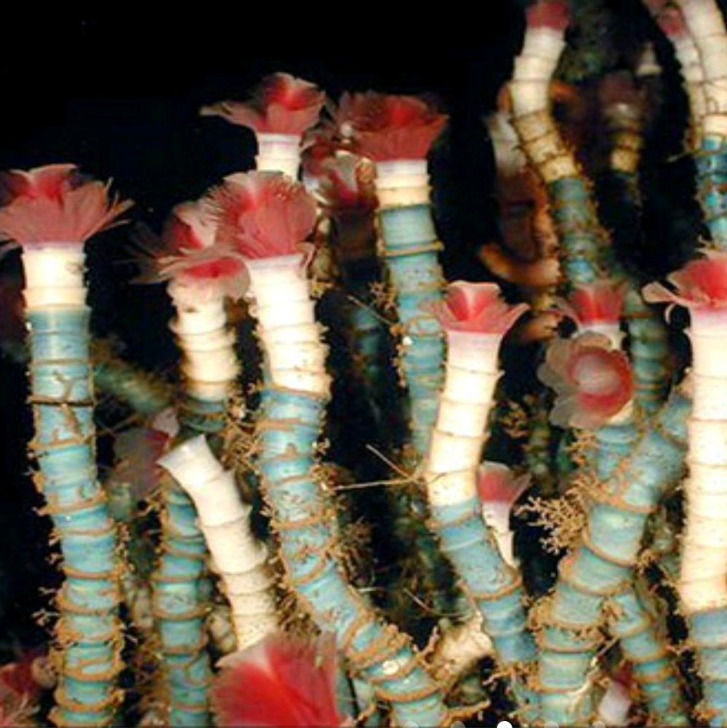
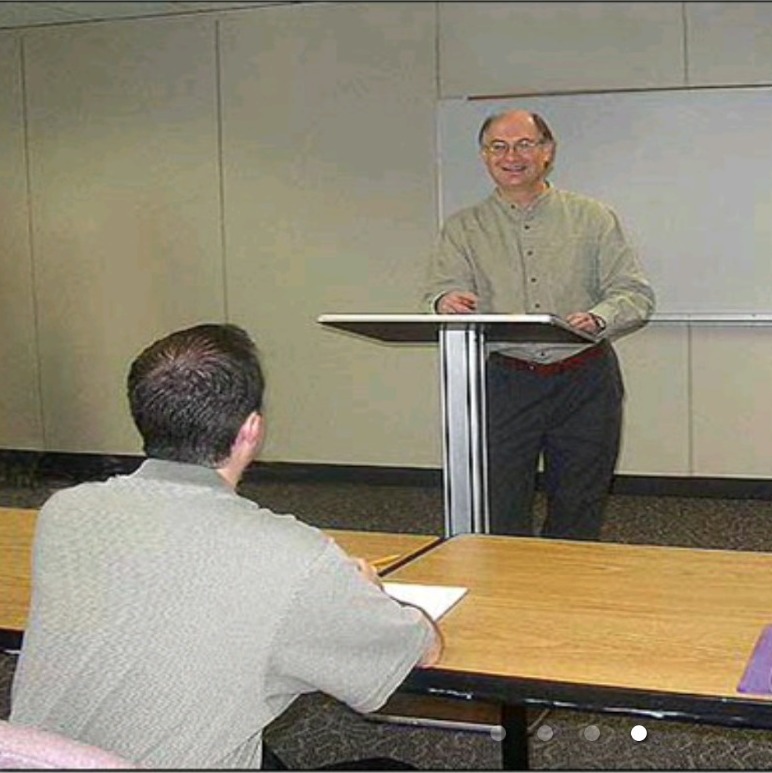
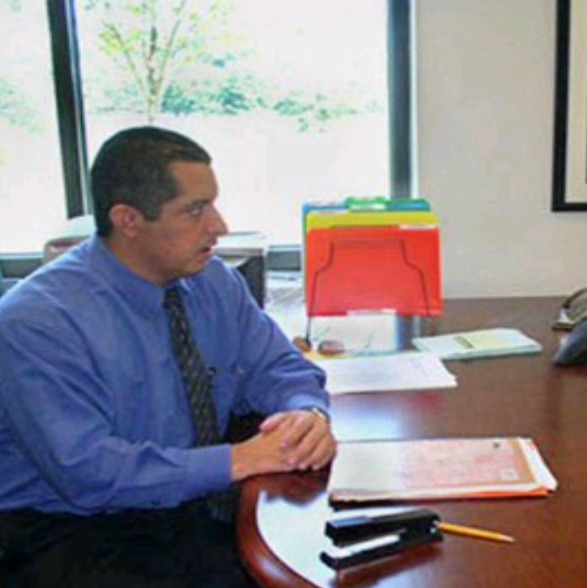
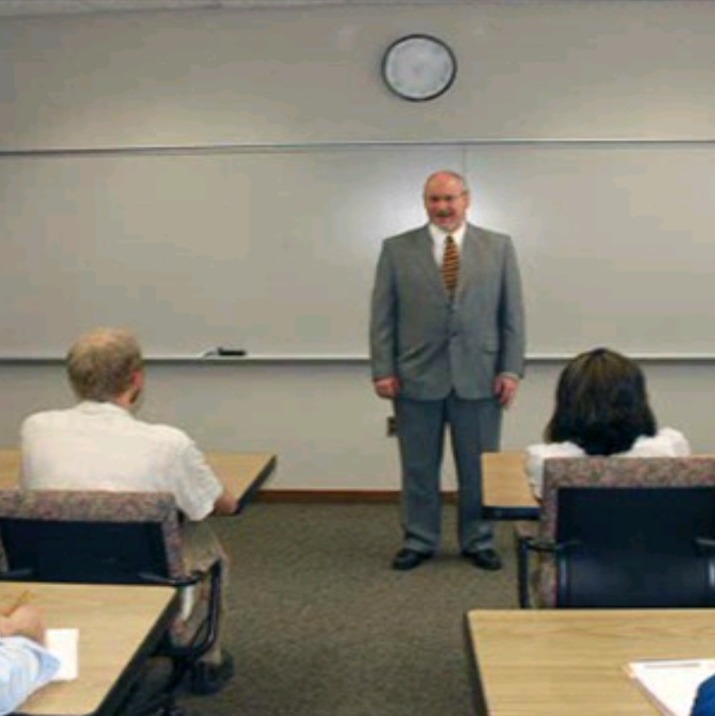
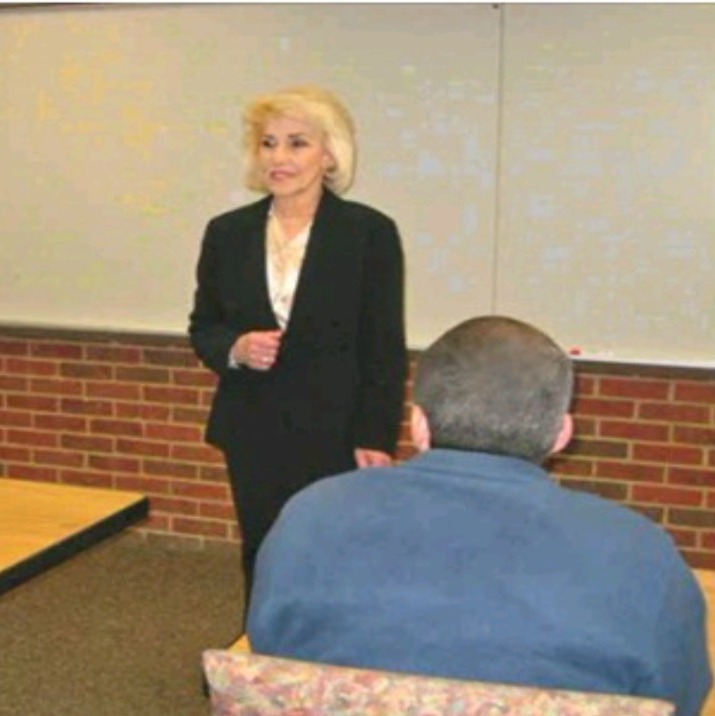

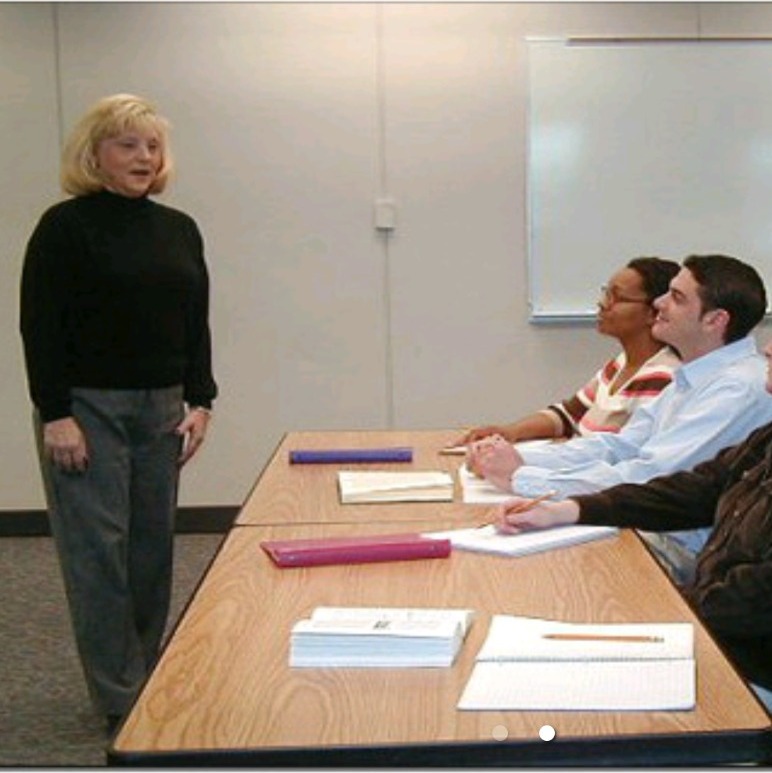
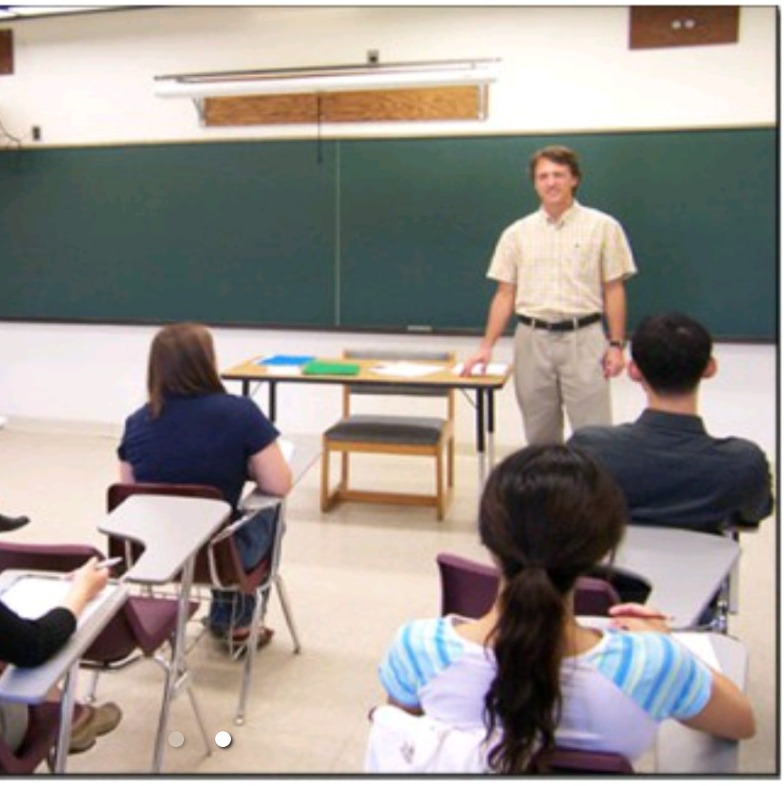
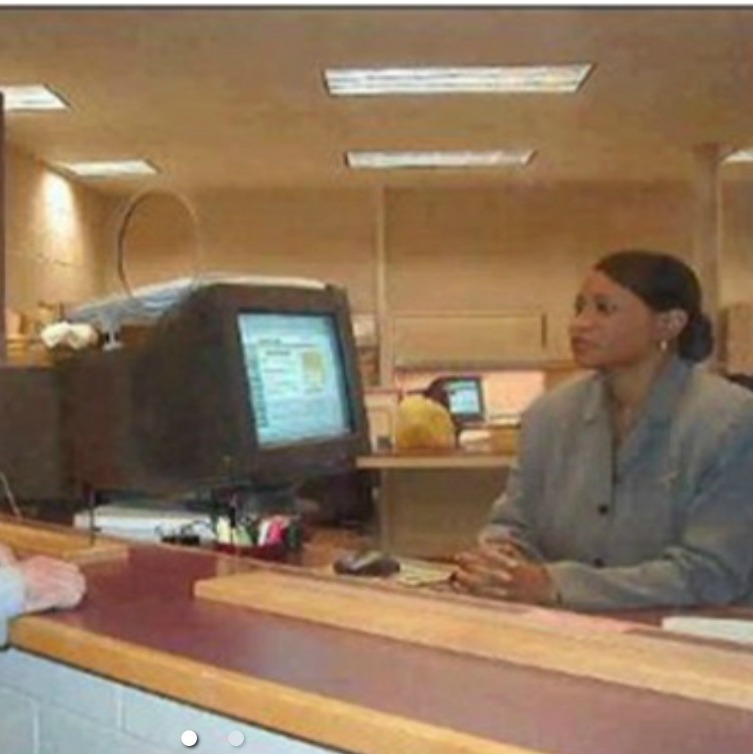
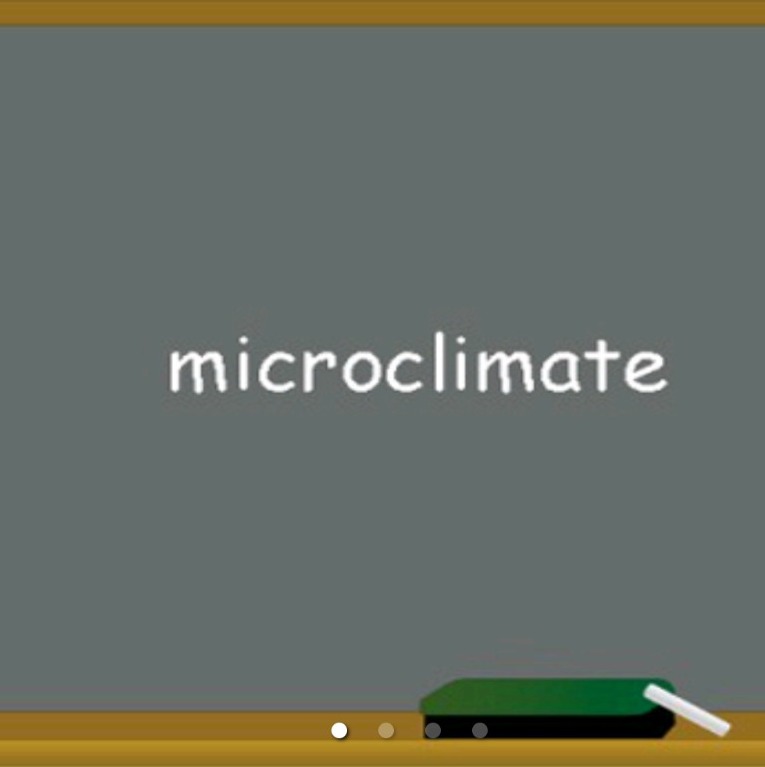
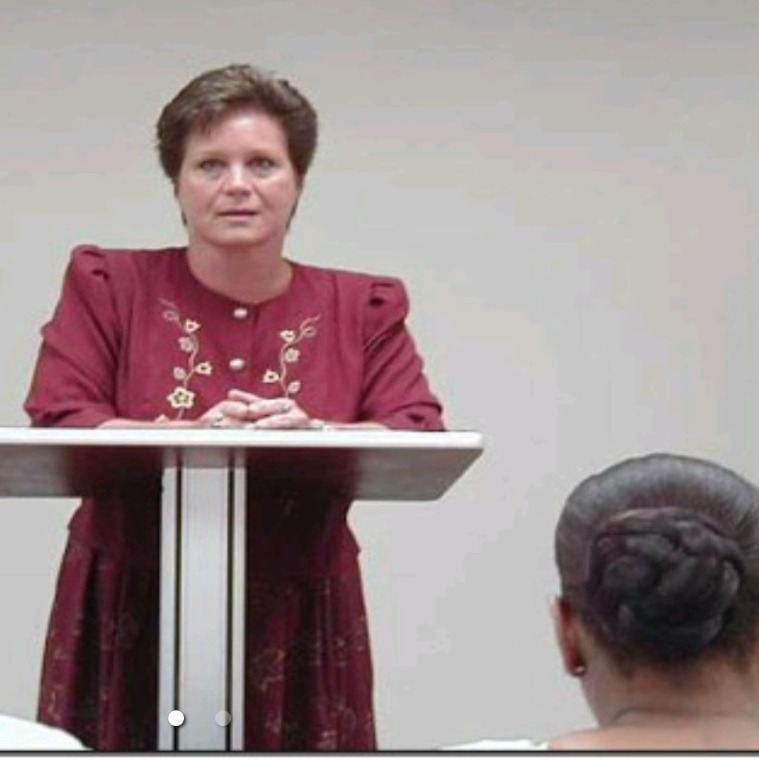
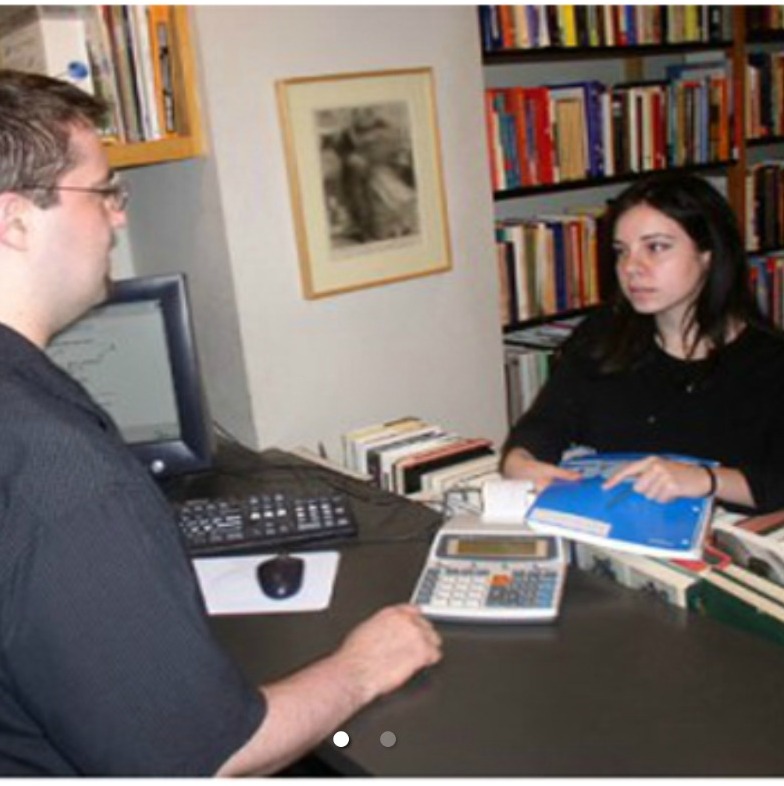
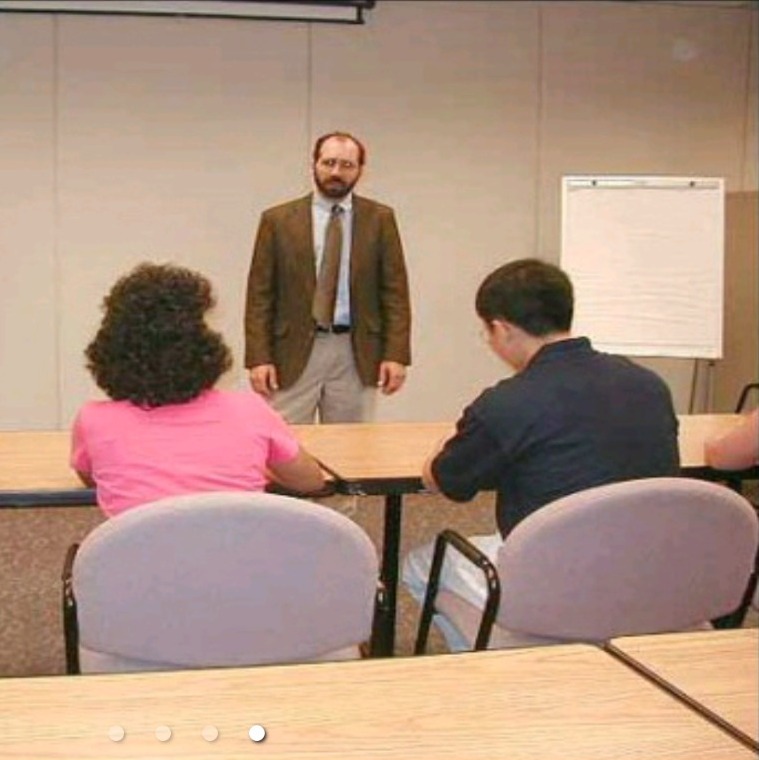
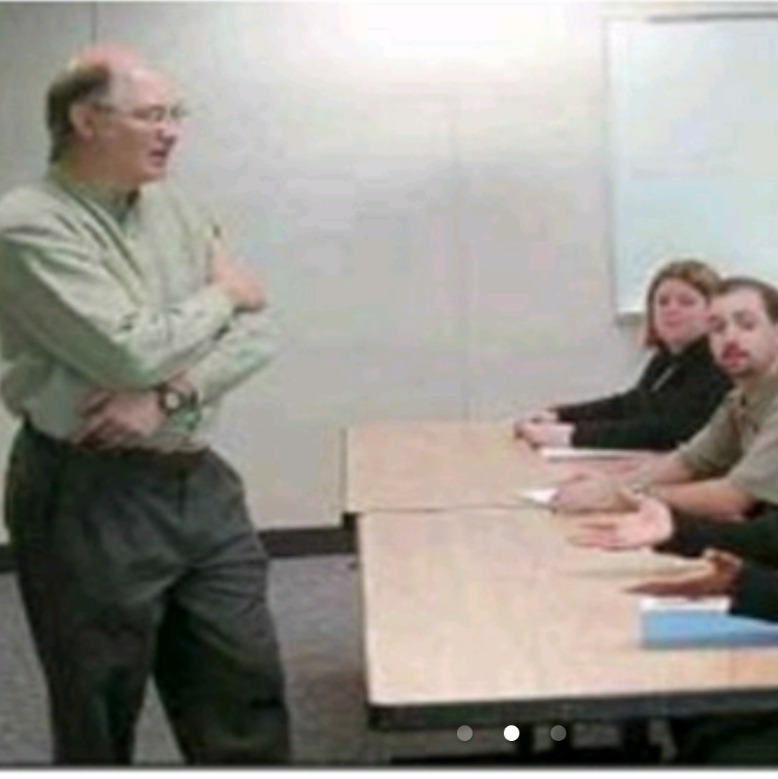
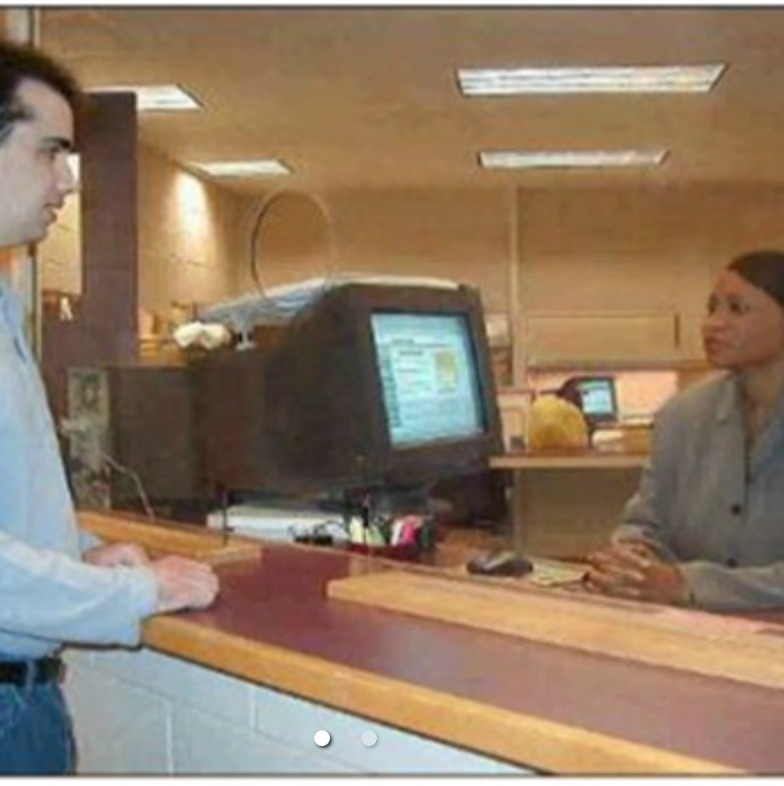
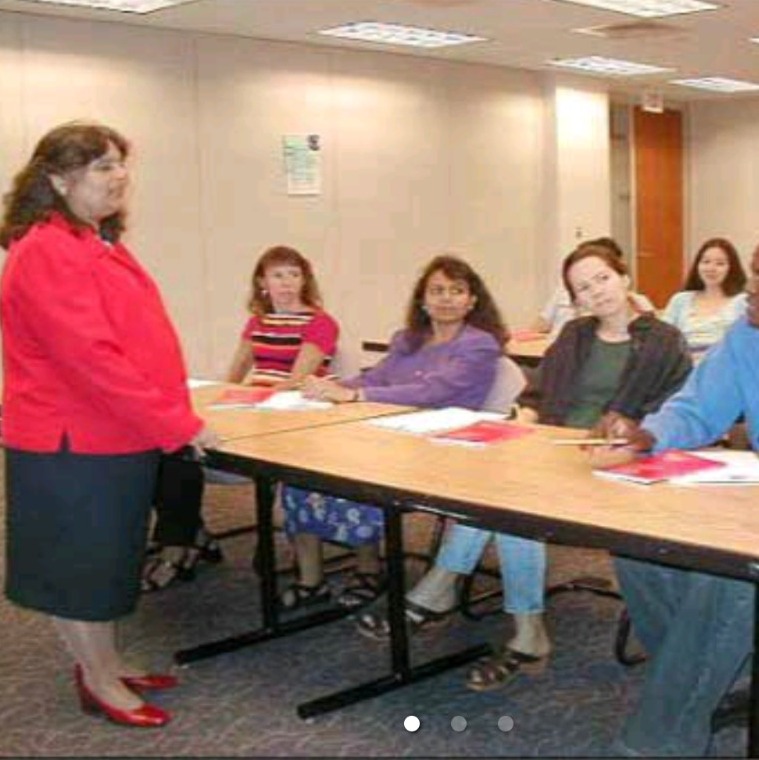
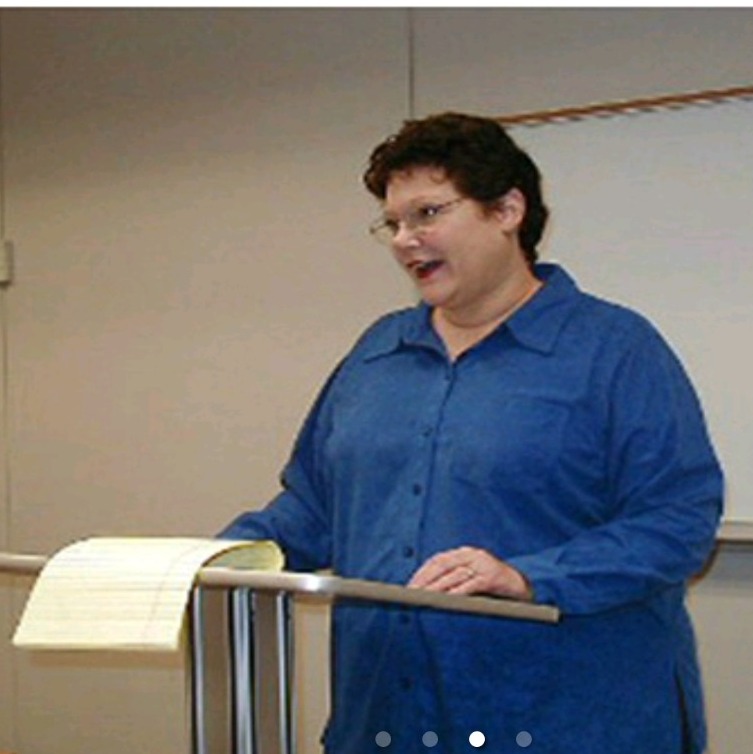
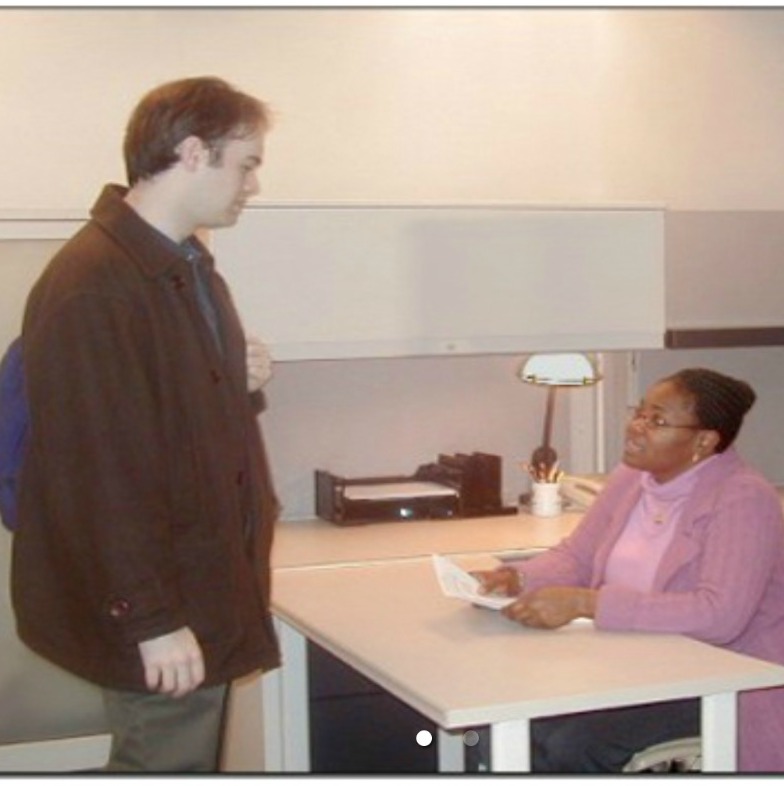
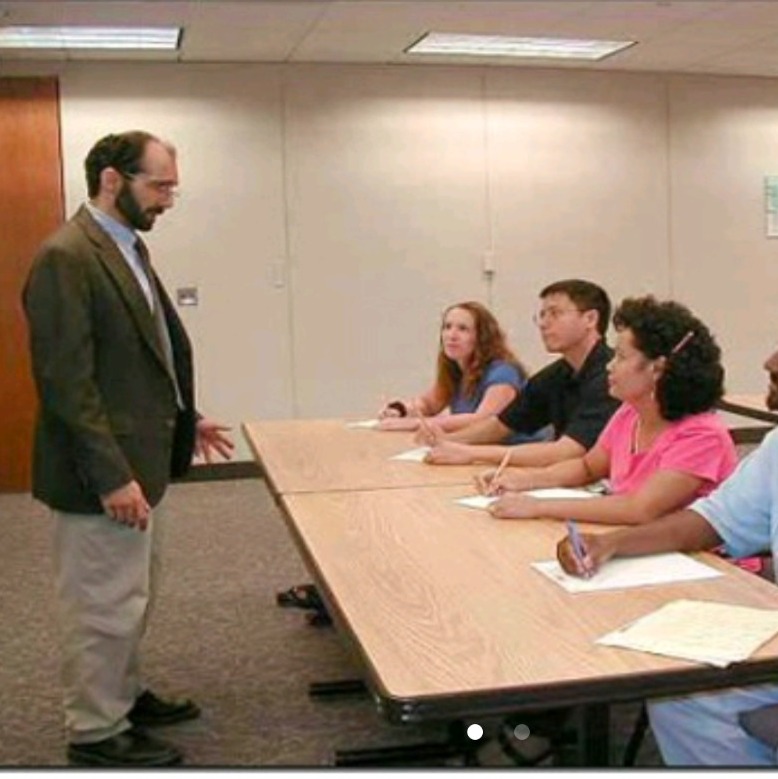



thanks for description #English
tnx, great 👍
TPO 11 - Conversation 1 Narrator: Listen to a conversation between a student and a university employee. Student: Hi, I need to pick up the gym pass. Employee: OK. I’ll need your name, year, and university ID. Student: Here’s my ID card. And my name is Gina Kent, and I’m first year. Employee: OK. Gina. I’ll type up the pass for you right away. Student: Great! This is exciting. I can’t wait to get started. Employee: Oh, this is a wonderful gym. Student: That’s what everybody has been saying. Everyone is talking about the new pool, the new indoor course. But what I love is all the classes. Employee: The classes…? Student: Yes, like the swimming and tennis classes and everything. Employee: Oh yeah, but this pass doesn’t entitle you to those. Student: It doesn’t? Employee: No, the classes fall into a separate category. Student: But, that’s my whole reason for getting a pass. I mean, I was planning to take a swimming class. Employee: But that’s not how it works. This pass g
#tpo #listening 1-1 description Narrator: Listen to part of a conversation between a student and a librarian. Student: Hi, um..., I really hope you can help me. Librarian: That's why I'm here. What can I do for you? Student: I'm supposed to do a literature review for my psychology course, but um... having a hard time finding articles. I don't even know where to start looking. Librarian: You said this is for your psychology course, right? So your focus is on ... Student: Dream Interpretation. Librarian: Well, you have a focus, so that's already a good start. Hmmm... well, there're a few things... oh wait... have you checked to see if your professor put any material for you to look at on reserve? Student: Aha, that's one thing I did know to do. I just copied an article, but I still need three more on my topic from three different journals. Librarian: Let's get you going on looking for those then. We have printed versions of twenty or so psychology journals in the Reference Section. These
your channel is great if U share the text of each episode with them, this will be really better🙏🏻✨